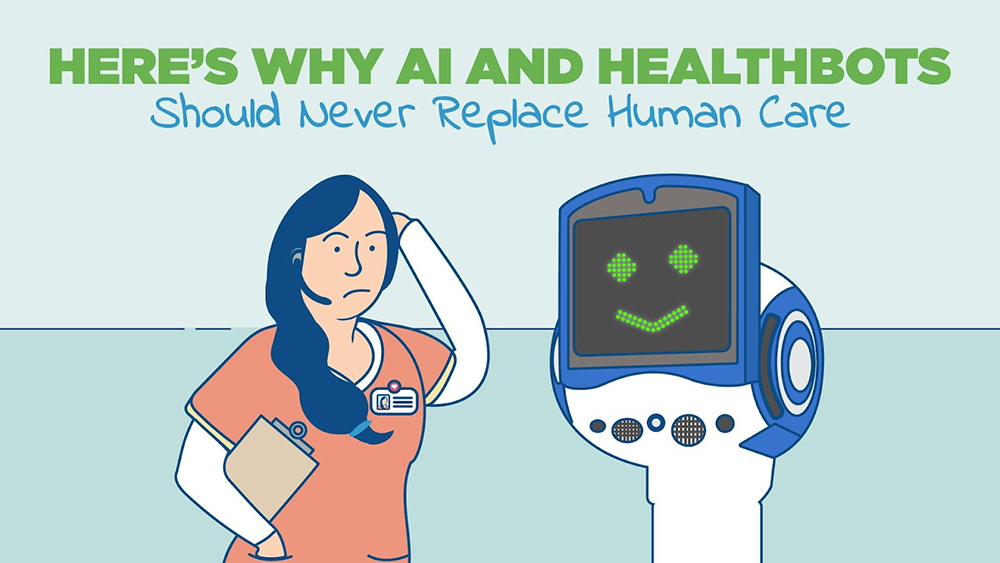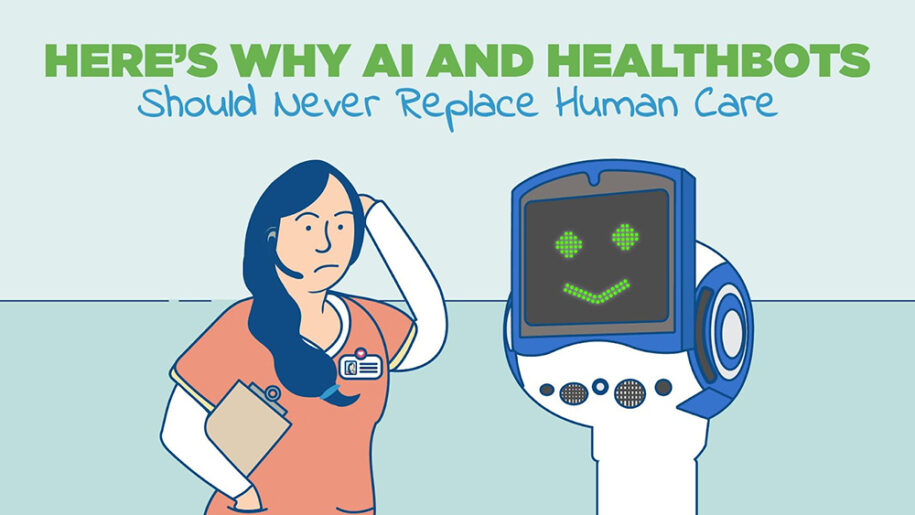
Exploring AI’s Role in Health Care
You might feel comfortable chatting with a robot about upgrading your cell phone plan or resolving a product FAQ. But what about addressing the most intimate details of your life and health status?
The use of chatbots in health care, or so-called “healthbots,” started growing alongside uptake for consumer goods and services. The pandemic made them seem even more practical when hospitals were jammed, staffing numbers thinned and patients chose to stay home rather than keep up with routine appointments.
Given its potential for cost savings and improving patient connectivity, artificial intelligence is all but certain to expand in the health care space. At Signallamp, where our chronic care management and remote patient monitoring models are based on meaningful patient engagement with nurses, we believe AI tools will get better and more relevant to the patient experience.
But every new health care innovation must be especially mindful of how care is delivered today, especially when we’re talking about expanding capacity to engage patients beyond the four walls of the clinic.
Signallamp provides a welcome counterbalance — a technology platform maximizing the efficiency of a clinical workforce to provide longitudinal patient engagement.
Before the pandemic, health care marketing agency Klick Health polled 100 U.S.-based physicians about their thoughts on chatbots in health care. Their findings were published in 2019 in the Journal of Internet Medical Research based on a poll of general practice docs in 32 states.
The researchers said that few scientific studies to date had explored whether doctors think healthbots are actually effective in “real-world patient scenarios,” and likewise whether physicians appreciate when their health systems use them.
The survey found that doctors believe healthbots provide a logistical advantage for tasks like scheduling appointments, processing payments and providing medication instructions and education on side effects and drug interaction.
But just like self-driving cars, which notoriously struggle to discern between a person waiting to cross the street or someone waiting for a bus, teaching healthbots the art of context remains a challenge.

On top of that, an untold number of patients will chafe at the idea of texting a robot about their health instead of talking to a human on the phone. Those patients are already likely reluctant to engage on the most pressing issues of their healthcare, and value creating interventions from a position of trust.
For health care to be effective, it must be personal. But there are some areas where healthbots absolutely supplement human interaction, and they’re doing it now. Those attributes are worth mentioning here.
| The Benefits of AI and Healthbots | |
|---|---|
| Increased awareness for engagement | Promotes available channels for patient engagement to targeted cohorts. |
| Cost effective | They’re always on, they capture data and perform low-level tasks, and may provide an effective and suitable alternative to a person in a chair. |
| Diagnostic support | A robot may speed up the triage process by getting important questions out of the way before an actual person jumps in. |
| Automates the mundane | Robots can manage tasks like scheduling visits and prescription management, handing that time back to health workers to complete more meaningful tasks. |
Chatbots supplement provider care, but can’t replace it
If deployed properly, chatbots add efficiencies to the continuum of care and support engagement for most, if not all, health care service categories, including remote care. That said, no service delivery model should use AI to bump real human providers off the continuum.
That’s especially true for chronic care management, where patients often have complex cases with several comorbidities.
Here’s why:
| The Downsides of AI and Healthbots for CCM and RPM | |
|---|---|
| Decreased patient engagement | Wait a sec. Didn’t we just say healthbots increase patient engagement? Yes, but in limited ways. Healthbots struggle to hold patients accountable in the long run. The Klick research says reliance on healthbots led to poor adherence, likely because patients felt they weren’t answering to a human. |
| Healthbots may miss critical markers that only an experienced health professional can catch | Researchers resoundingly say artificial intelligence and chatbots hold promise to improve care when used in tandem with human-delivered care. |
| Diagnostic support | A robot may speed up the triage process by getting important questions out of the way before an actual person jumps in. |
| Humans are simply better at chronic care management | Signallamp’s own research across more than 50,000 active patients shows that a patient’s relationship with their care team is the single biggest indicator for success in managing chronic disease. |
What doctors say about the future of chatbots
The Klick study found that while some doctors are comfortable using chatbots for automating tasks, they don’t trust the current technology to “replace complex decision-making tasks requiring an expert medical opinion.”
Or to put it another way: “Call us when you have something.”
For now, we are optimistic on the promise of tomorrow, but focus the majority of our technology development on remote care workforce optimization for sustained patient engagement.
At Signallamp, as an extension of practices and health systems, our nurses develop rapport with their chronically ill populations by adding a layer of accountability and trust between office visits. We build relationships through consistent, human conversations with patients backed by direct access and daily engagement with the patient’s chosen provider. We see the more immediate evolution of AI in health care to support human engagement, not replace it.
Schedule a call to see how Signallamp Health increases patient engagement through relationships.

